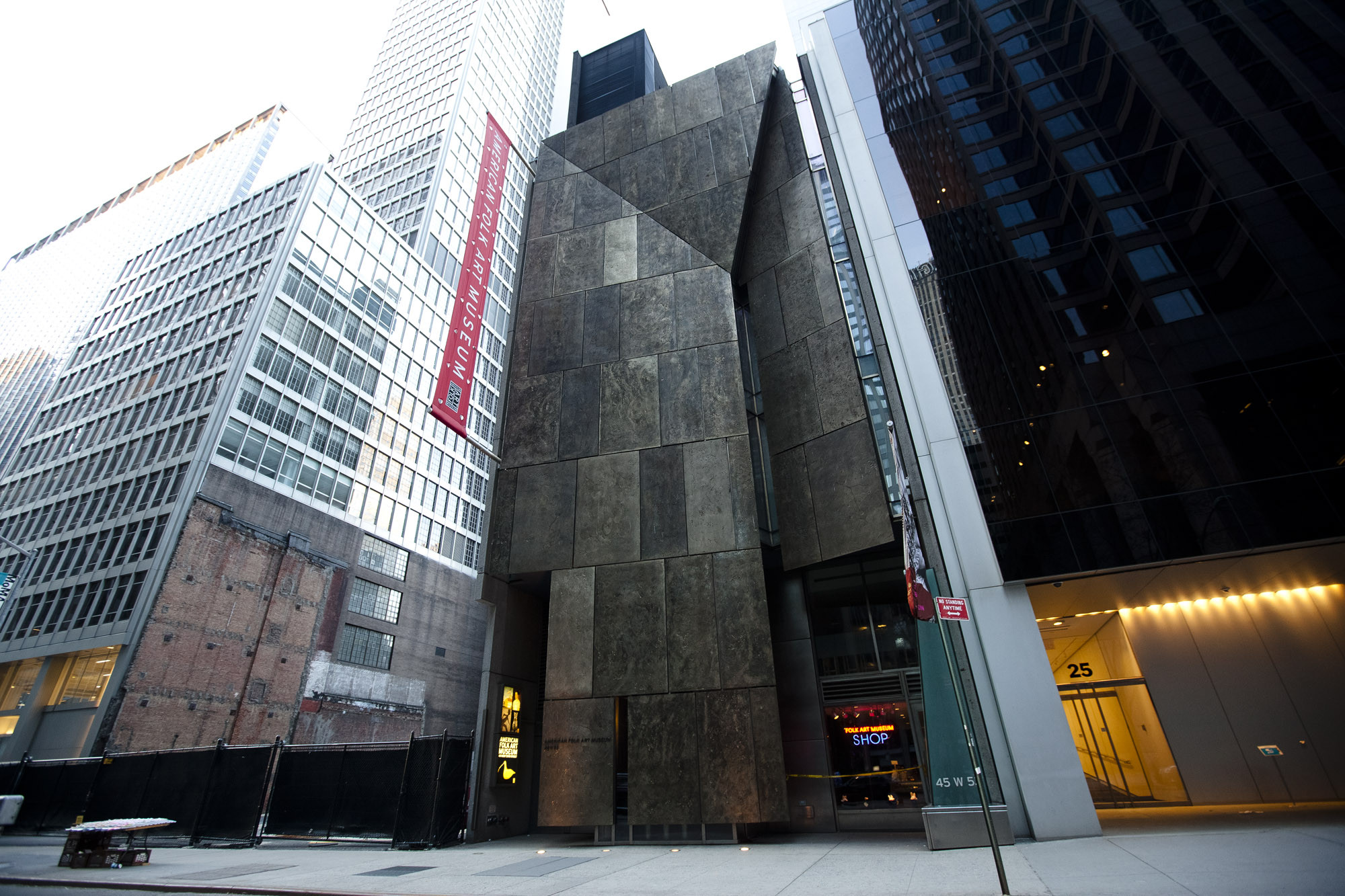
The Folk Art Museum is most certainly doomed; it may have been doomed from its first appearance. Designed and built to endure, it will soon dissipate in a fog of demolition and fading memory, its lifespan ultimately briefer than a McDonald’s franchise. Looks aren’t everything, I guess.
This raises a lot of questions about permanence, memory, and the spatial character of cities. If The Folk were not in New York, would its status as a landmark building still hold? A particularly New York type of building, more front and slot, it’s a building that is about the street as much as it is about an interior world beyond that street. And losing it will mean West 53rd will be wrought more mega in scale and commercial in vision.
As Paul Goldberger stated in Vanity Fair, “A city that allows such a work to disappear after barely a dozen years is a city with a flawed architectural heart. A large cultural institution that cannot find a suitable use for such a building is an institution with a flawed architectural imagination.”
Tod Williams and Billie Tsien’s response, cited in The Architect’s Newspaper, echoed the sentiment:
“The Folk Art building was designed to respond to the fabric of the neighborhood and create a building that felt both appropriate and yet also extraordinary. Demolishing this human‐scaled, uniquely crafted building is a loss to the city of New York in terms of respecting the size, diversity and texture of buildings in a midtown neighborhood that is at risk of becoming increasingly homogenized.”
Mimi Zieger, writing in Dezeen, countered: there is “a lingering sentimental belief that architecture is an exception to the rules of obsolescence.” She continues by suggesting that architecture be more at home with designed-in obsolescence. “Today, upgrading is a function of Moore's law,” she argues, “the observation that technology gets exponentially smaller and more powerful every two years. It's like breathing: one inhale, one exhale.”
But in the case of architecture it seems there may be a variant of Moore’s Law at work. When one architecture is swapped out for another architecture, what replaces the original can be larger and more dissipated. It is the Folk that is smaller and more powerful…though not powerful enough to alter the course of MoMA’s board and DS+R’s mouse clicks.
What now? What are we left with? Architects lamented The Folk’s diminished stature in the eyes of MoMA, a revered but complicated institution. They now lament MoMA’s decision to do away with the building. Soon they will mourn its disappearance. And then it will be gone. The fact that it is in New York makes this more resonant, but also more normal. And then it will be on to the next thing.
The act of disappearing the Folk and shoving a glass box over where it stood is like removing a limb from a body and replacing it with an elephantine prosthetic. But, in time, the DS+R prosthetic will be the new limb and The Folk, the barely perceptible phantom.
Many who have never been to that block won’t even know what the Folk was, nor of its existence. But as long as it stands it remains for discovery. It is there to be found and felt as you walk down the sidewalk, even if it’s merely a shell of its former self. And I suppose this is the point: the Folk is difference amidst a grid of increasing sameness. It’s a special little point and makes people stop and wonder. But this is not enough to hold off the pressures of real estate in post-Bloomberg New York, a city that continues to periodically work itself into frenzies of development. And MoMA has been itching to develop that block for a long time.
This just in: Continuing his campaign of goodness and fairness, Pope Francis will purchase the bronze panels for the Vatican, where they shall remain for eternity, or until the seas rise. If this doesn’t work out, look for them in the MoMA giftshop.
Guy Horton is a writer based in Los Angeles. In addition to authoring "The Indicator", he is a frequent contributor to The Architect's Newspaper, Metropolis Magazine, The Atlantic Cities, and The Huffington Post. He has also written for Architectural Record, GOOD Magazine, and Architect Magazine. You can hear Guy on the radio and podcast as guest host for the show DnA: Design & Architecture on 89.9 FM KCRW out of Los Angeles. Follow Guy on Twitter @GuyHorton.

